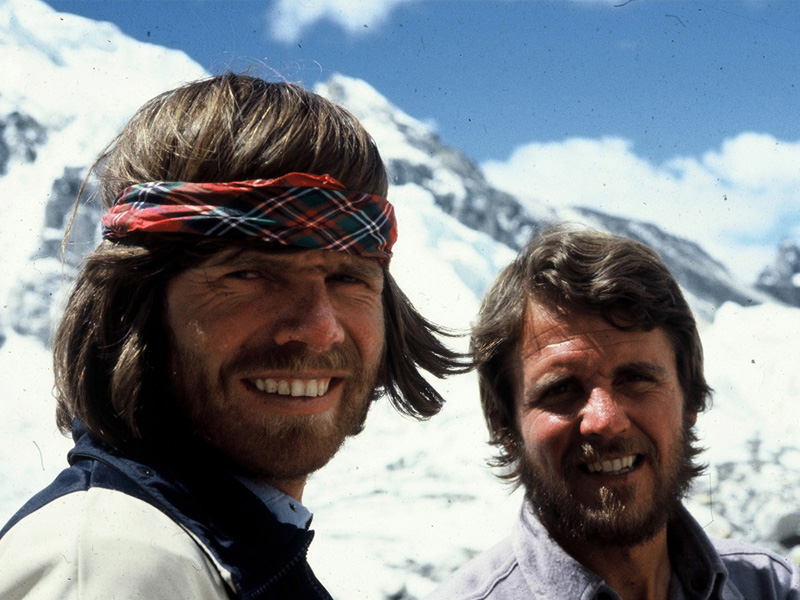A BOOT AND A BROTHER

It is said that the mountain never lies. More than half a century ago Reinhold Messner, a famous mountaineer along with his younger brother Guenther went climbing Nanga Parbat the 9th highest peak in the Himalayas. But as fate would have it they were caught by a huge avalanche which took the younger’s life. Reinhold somehow survived but lost his way and was found after six days of wandering with frostbites. But fellow mountaineers accused him of letting his brother die to achieve the rare honor all for himself. Reinhold, a former M.P of the European Parliament, denied it time and again but no one believed him and the body of his brother was never found. He lived with the ignominy of letting his brother die for his own fame exclusively.
But after half a decade the recent discovery of his brother’s boot that lay entombed in a Himalayan glacier has laid to rest, once and for all, one of the most enduring controversies in the world of mountaineering. The leather boot belonged to Guenther who died on the ice-shrouded slopes of 8,126m-high (26,660ft) Nanga Parbat in Pakistan in 1970. He was the brother of Reinhold, who went on to become one of the world’s most celebrated alpinists and became the first person to climb Mt Everest without additional oxygen.
For decades there was speculation and rumour that Reinhold left his amateur brother to die on the mountain in a selfish push to win glory for himself by reaching the summit. This was believed by none other than two of the climbers on the expedition, Hans Saler and Max von Kienlin. They wrote books in which they claimed that Reinhold was so obsessed with conquering Nanga Parbat that he abandoned his frostbitten and delirious brother.
Reinhold, right, had also faced accusations that he abandoned his younger brother Guenther in a selfish push to reach the summit first. Reinhold always denied the accusations, saying that the pair had reached the summit of Nanga Parbat, the ninth highest peak in the world, only for his 23-year-old brother to be tragically swept away in an avalanche during the descent. Reinhold barely escaped with his life, staggering down the mountain, wandering for six days until he was rescued and losing several toes to frostbite.
Now, 52 years on, the location of the boot appears to corroborate his insistence that he did not abandon his younger brother. The boot was found by local people at the foot of the mountain’s western Diamir face – exactly where Reinhold said his brother had been swept to his death. Now I am at peace, he said.

DNA analysis by Austrian experts showed that the bones once found belonged to Günther . “The remains were found on the slope which I had always said was the place where I saw him disappear.” There was no doubt that the recently discovered boot also belonged to his brother because it had been specially made for the expedition, he said. The discovery offered final vindication of his account of what happened to his brother on the frozen flanks of Nanga Parbat more than half a century ago, he said.
In a book he wrote in 2003, The Naked Mountain, Reinhold said that as they descended the mountain, his brother was suffering from altitude sickness. He said that after they became separated he made desperate attempts to locate Günther but in vain. “The mountain never lies and, if there was still the need, the discovery of this boot definitively establishes the truth of my brother’s death. This is incontrovertible proof that Günther disappeared during the descent, not during the ascent.”
He now wants the boot sent back to Italy, where it will go on display in one of the Messner Mountain Museums that he has established in his native South Tyrol, the German-speaking corner of northern Italy. The fact that he survived the treacherous conditions that carried away his brother was a miracle, he said. A legend in the climbing community, Reinhold Messner was the first person to scale all 14 of the world’s peaks that exceed 8,000 metres (26,250 feet) in height.
Source: Himalayan News Chronicle














टिप्पणीहरू